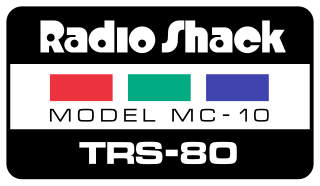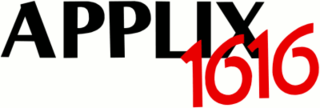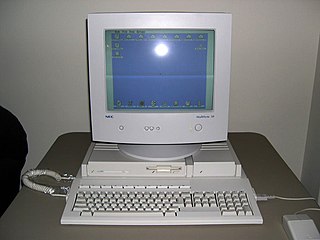
The Motorola 68000 Educational Computer Board (MEX68KECB) was a development board for the Motorola 68000 microprocessor, introduced by Motorola in 1981. It featured the 68K CPU, memory, I/O devices and built-in educational and training software.

The Motorola 68000 Educational Computer Board (MEX68KECB) was a development board for the Motorola 68000 microprocessor, introduced by Motorola in 1981. It featured the 68K CPU, memory, I/O devices and built-in educational and training software.
The board has built-in 16K ROM memory containing assembly/disassembly/stepping/monitoring software called TUTOR. The software was operated using command-line interface over a serial link, and provided many commands useful in machine code debugging. Memory contents (including programs) could be dumped via a serial link to a file on the host computer. The file was transferred in Motorola's S-Record format. Similarly, files from host could be uploaded to the board's arbitrary user memory area.
The price of the Motorola ECB at launch was US$495(equivalent to $1,590 in 2022) [1] which was relatively inexpensive for a computer with an advanced for that time 16/32-bit CPU.
According to the manual, for basic use only a dumb terminal and power source are required. However, it seems that in colleges the board was predominantly used in connection with a time-sharing host computer to teach assembly language programming and other computer science subjects. [2]
Guru Meditation started as an error notice displayed by the Amiga computer when it crashes. It is now also used by Varnish, a software component used by many content-heavy websites. This has led to many internet users seeing a "Guru Meditation" message when these websites suffer crashes or other issues. It is analogous to the "Blue Screen of Death" in Microsoft Windows operating systems, or a kernel panic in Unix.

The Motorola 68000 is a 16/32-bit complex instruction set computer (CISC) microprocessor, introduced in 1979 by Motorola Semiconductor Products Sector.

The Motorola 6809 ("sixty-eight-oh-nine") is an 8-bit microprocessor with some 16-bit features. It was designed by Motorola's Terry Ritter and Joel Boney and introduced in 1978. Although source compatible with the earlier Motorola 6800, the 6809 offered significant improvements over it and 8-bit contemporaries like the MOS Technology 6502, including a hardware multiplication instruction, 16-bit arithmetic, system and user stack registers allowing re-entrant code, improved interrupts, position-independent code and an orthogonal instruction set architecture with a comprehensive set of addressing modes.

The RadioShack TRS-80 Color Computer, later marketed as the Tandy Color Computer and nicknamed the CoCo, is a line of home computers developed and sold by Tandy Corporation. Despite sharing a name with the earlier TRS-80, the Color Computer is a completely different, incompatible system and a radical departure in design and compatibility with its Motorola 6809E processor rather than the Zilog Z80 earlier models were built around.
OS-9 is a family of real-time, process-based, multitasking, multi-user operating systems, developed in the 1980s, originally by Microware Systems Corporation for the Motorola 6809 microprocessor. It was purchased by Radisys Corp in 2001, and was purchased again in 2013 by its current owner Microware LP.

The KIM-1, short for Keyboard Input Monitor, is a small 6502-based single-board computer developed and produced by MOS Technology, Inc. and launched in 1976. It was very successful in that period, due to its low price and easy-access expandability.

MacsBug is a low-level debugger for the classic Mac OS operating system. MacsBug is an acronym for Motorola Advanced Computer Systems Debugger, as opposed to Macintosh debugger. The original version was developed by Motorola as a general debugger for its 68000 systems. — it was ported to the Mac as a programmer's tool early in the project's development.

The TRS-80 MC-10 microcomputer is a lesser-known member of the TRS-80 line of home computers, produced by Tandy Corporation in the early 1980s and sold through their RadioShack chain of electronics stores. It was a low-cost alternative to Tandy's own TRS-80 Color Computer to compete with entry-level machines such as the VIC-20 and Sinclair ZX81.

MicroBee was a series of networkable home computers by Applied Technology, which became publicly listed company MicroBee Systems Limited soon after its release. The original Microbee computer was designed in Australia by a team including Owen Hill and Matthew Starr.

The Applix 1616 was a kit computer with a Motorola 68000 CPU, produced by a small company called Applix in Sydney, Australia, from 1986 to the early 1990s. It ran a custom multitasking multiuser operating system that was resident in ROM. A version of Minix was also ported to the 1616, as was the MGR Window System. Andrew Morton, designer of the 1616 and one of the founders of Applix, later became the maintainer of the 2.6 version of the Linux kernel.

The Atari TT030 is a member of the Atari ST family, released in 1990. It was originally intended to be a high-end Unix workstation, but Atari took two years to release a port of Unix SVR4 for the TT, which prevented the TT from ever being seriously considered in its intended market.

The Motorola 68881 and Motorola 68882 are floating-point units (FPUs) used in some computer systems in conjunction with Motorola's 32-bit 68020 or 68030 microprocessors. These coprocessors are external chips, designed before floating point math became standard on CPUs. The Motorola 68881 was introduced in 1984. The 68882 is a higher performance version produced later.

Sun-1 was the first generation of UNIX computer workstations and servers produced by Sun Microsystems, launched in May 1982. These were based on a CPU board designed by Andy Bechtolsheim while he was a graduate student at Stanford University and funded by DARPA. The Sun-1 systems ran SunOS 0.9, a port of UniSoft's UniPlus V7 port of Seventh Edition UNIX to the Motorola 68000 microprocessor, with no window system. Affixed to the case of early Sun-1 workstations and servers is a red bas relief emblem with the word SUN spelled using only symbols shaped like the letter U. This is the original Sun logo, rather than the more familiar purple diamond shape used later.
Apple II serial cards primarily used the serial RS-232 protocol. They most often were used for communicating with printers, Modems, and less often for computer to computer data transfer. They could be programmed to interface with any number of external devices which were RS-232 compatible. Most serial cards had speed ranges starting from 110 bit/s up to 19,200 bit/s, however some could be modified to go much faster. The most popular and widely used of these cards was Apple Computer's Super Serial Card, a solid design that was often copied for maximum software compatibility of the end product.

Minimig is an open source re-implementation of an Amiga 500 using a field-programmable gate array (FPGA).

The Dick Smith Super-80 was a Zilog Z80 based kit computer developed as a joint venture between Electronics Australia magazine and Dick Smith Electronics.
DTACK Grounded was a computer hobbyist newsletter published from July 1981 to September 1985 by Hal W. Hardenberg. Subtitled "The Journal of Simple 68000 Systems", the newsletter was dedicated to the proposition that the Motorola 68000 CPU could be used to build simple, fast computers. In 1981 this was a revolutionary idea. This was before 68000-based personal computers like the Sharp X68000, Macintosh, Amiga, and Atari ST had been created. In 1981 Motorola was marketing the 68000 solely as a CPU for Unix workstations. Hal believed that the 68000 could be used as a simple embedded microprocessor as well, and used the newsletter to explain how to do that.
Each time Intel launched a new microprocessor, they simultaneously provided a system development kit (SDK) allowing engineers, university students, and others to familiarise themselves with the new processor's concepts and features. The SDK single-board computers allowed the user to enter object code from a keyboard or upload it through a communication port, and then test run the code. The SDK boards provided a system monitor ROM to operate the keyboard and other interfaces. Kits varied in their specific features but generally offered optional memory and interface configurations, a serial terminal link, audio cassette storage, and EPROM program memory. Intel's Intellec development system could download code to the SDK boards.
Communications Processor Module (CPM) is a component of Motorola 68000 family (QUICC) or Motorola/Freescale Semiconductor PowerPC/Power ISA (PowerQUICC) microprocessors designed to provide features related to imaging and communications. A microprocessor can delegate most of the input/output processing to the Communications Processor Module and the microprocessor does not have to perform those functions itself. Some input/output functions require quick response from the processor, for example due to precise timing requirements during data transmission. With CPM performing those operations, the main microprocessor is free to perform other tasks.
The VT1000 was a monochrome X Window System computer terminal introduced by Digital Equipment Corporation (DEC) in April 1990. The VT1200 replaced the VT1000 later that year, consisting of a code update and a bump in the RAM from 1 to 2 MB. All of the VT1000 series communicated with their host computers over Ethernet, supporting TCP/IP as well as DEC's terminal-oriented Local Area Transport (LAT) protocol. They also included standard serial ports to allow basic terminal emulation, built into the ROM.
MC68000 Educational Computer Board User's Manual